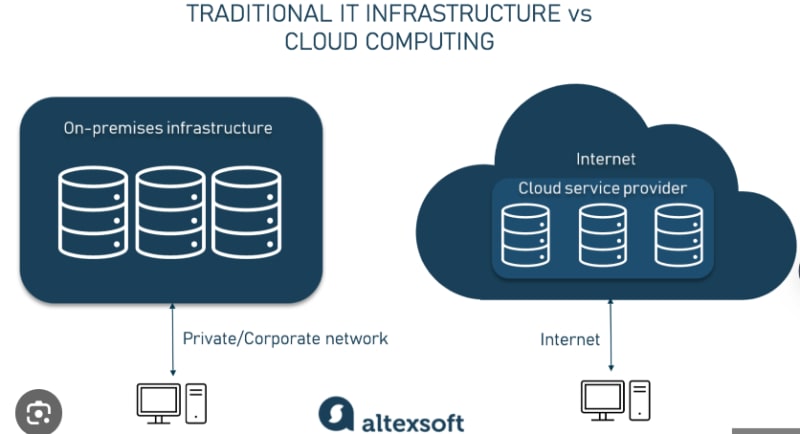Introduction
In today's digital age, the rapid evolution of technology has revolutionized the way businesses operate and individuals engage with the world. One of the most transformative innovations in recent times is cloud computing. This revolutionary approach to computing has reshaped the IT landscape, offering a plethora of benefits that have empowered businesses, organizations, and individuals alike. In this blog post, we will delve into the numerous advantages that cloud computing brings to the table.
Scalability and Flexibility:
Cloud computing provides unprecedented scalability and flexibility for businesses of all sizes. With traditional on-premises infrastructure, scaling up required significant investments in hardware and IT resources. Cloud computing allows businesses to scale their operations up or down swiftly based on demand. Whether it's handling sudden traffic spikes or accommodating business growth, the cloud ensures resources are available on-demand, eliminating the need for excessive upfront investments.``Cost Efficiency:
Cloud computing operates on a pay-as-you-go model, which means businesses only pay for the resources they use. This eliminates the need for heavy upfront capital investments in hardware and infrastructure. Additionally, businesses can avoid the ongoing costs of maintaining and upgrading on-premises equipment. This cost-efficient approach allows organizations to allocate resources more effectively and invest in other critical areas of their operations.Accessibility and Remote Work:
Cloud computing enables seamless accessibility to data and applications from anywhere with an internet connection. This has become particularly valuable in the wake of the global shift toward remote work. Team members can collaborate in real-time on shared documents, applications, and projects, enhancing productivity and enabling flexible work arrangements.Disaster Recovery and Business Continuity:
Traditional disaster recovery methods were often complex and expensive. Cloud computing simplifies this process by offering automated backups, redundancy, and failover options. This ensures that even in the face of a major hardware failure or disaster, data and applications can be quickly restored, minimizing downtime and ensuring business continuity.Security and Data Protection:
Cloud service providers invest heavily in security measures to protect their infrastructure and customer data. They typically employ robust encryption, multi-factor authentication, and regular security audits to safeguard sensitive information. While security concerns exist in any technology, cloud providers often have the expertise and resources to handle these matters more effectively than individual businesses.
- Environmental Impact: Cloud computing contributes to a reduced carbon footprint. Traditional data centers require a significant amount of energy to power and cool their servers. Cloud providers can optimize their data centers for energy efficiency, leading to a more environmentally friendly computing solution.
- Innovation and Time-to-Market: Cloud computing accelerates innovation by reducing the time and resources required to deploy new applications and services. Developers can leverage cloud-based platforms, tools, and APIs to build and deploy applications faster. This agility allows businesses to respond to market demands more rapidly and experiment with new ideas without major upfront investments.
- Global Reach: For businesses looking to expand their global presence, cloud computing offers a practical solution. Cloud services are available in various regions worldwide, allowing businesses to deliver applications and services to customers across the globe with reduced latency.
Conclusion
In conclusion, cloud computing has reshaped the IT landscape and revolutionized the way businesses operate. Its scalability, cost efficiency, accessibility, security, and environmental benefits make it a compelling choice for businesses of all sizes. The ability to innovate faster, ensure business continuity, and support remote work further solidify cloud computing as a cornerstone of modern-day technological progress. As the digital landscape continues to evolve, embracing the cloud has become less of an option and more of a strategic imperative for organizations aiming to thrive in the digital era.











Top comments (0)